Proffitt’s was a chain of department stores based, for the period in which I was associated with the company, in Alcoa, TN. Proffitt’s was the first division in the entity Proffitt’s Inc. The corporation changed both its name and orientation … Continue reading
Proffitt’s was a chain of department stores based, for the period in which I was associated with the company, in Alcoa, TN. Proffitt’s was the first division in the entity Proffitt’s Inc. The corporation changed both its name and orientation in 1998. The new entity was called Saks Inc. TSI’s relationship with that corporation and the people in Proffitt’s Marketing Group (PMG) has been described here.
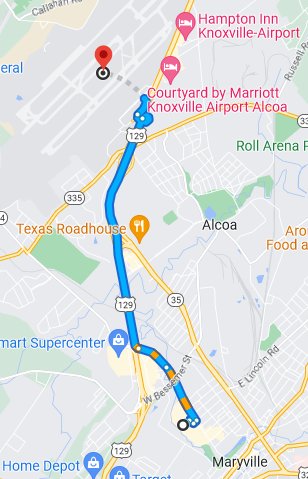
I don’t think that I did a demo for Proffitt’s. Rather, the decision to use AdDept there was made by PMG based on the success of the installation at McRae’s that is described here. I definitely remember my first trip to the divisional headquarters. In April of 1998 I flew on Delta from Atlanta and arrived at McGhee Tyson Airport1, which is also located in Alcoa. I rented a car and drove the short distance to Proffitt’s headquarters, which was in a strip mall that did not have a Proffitt’s store. The mall’s anchor store, if you could call it that, was a Burlington Coat Factory.
By the day that I arrived, the advertising department’s AS/400 was already installed in a closet. Next to it was the system console. There was already a premium on space there, and it got worse very quickly. On some occasions I was required to work in that closet. It was a strong contender for the worst work environment that I had to endure.
The connectivity was also installed and configured by someone else. Specifically, TSI had nothing to do with the selection of the emulation software for the Macs.
Proffitt’s advertising department was not very large. The primary reason for this was that much of the creative and production work had been outsourced to an ad agency in Chicago named Ambrosi. I wrote this about the agency’s practices in April of 2000:
Ambrosi has a minimum charge of $175 for materials. They sent an invoice to Proffitt’s with a line on it with a $175 charge for “eye shadow kit.” Proffitt’s paid it without questioning it. The bill was nearly $20,000 over the budget – for one catalog.
The people: My original contact was the production manager, Tom Henry. All that I remember about him is that he took me to lunch that first day in his Corvette that was not really a Corvette. He said that it was “a knock-off”. I should have asked him to elaborate on the subject, but I did not. I think that we ate at an extremely inexpensive pizza place where you just pointed at the slices that you wanted. I have forgotten the name of the place.
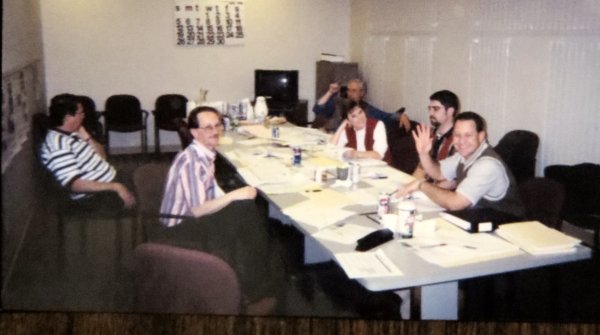
Long after I posted this entry I discovered this photo of a meeting at PMG in Birmingham. Tom Henry is on the left in the shirt with horizontal stripes. On the opposite side of the table are two other people from Proffitt’s: Tom Waltz at the far end and Cindy Karnoupakis in red and white. I think that Tom W. was the manager of the business office before Jim Pierce. Cindy may have been his assistant. Steve VeZain of PMG is waving on the right. I don’t remember the meeting, and I have no firm recollections of Tom W. and Cindy.
I did not work with him much after that day. He was in charge of the department’s computers. Therefore, he had me train some people who worked for him how to check the backups. Leaving this important role up to them was a mistake.
I wrote this about the situation in early 2000:
This installation got off to a very slow start. All the people involved in the project initially bailed out when the data entry started. Three people are now involved – Jeannie Gorman for ROP, Lucy Delk for other media, and Jim Pierce in the business office. Jim, although a very laid-back guy, has more or less taken the bull by the horns in the last few months. They are now using AdDept for closing – accruals and the prepaid to expense journal entry for all media.
Don Alexander2 was the Senior VP of the department until July of 2000, but I do not remember dealing with him much. In fact, I remember very little about most of the people in the department until Marianne Jonas came from McRae’s to become the Advertising Director in August of 2000.
Jim Pierce handled the finances. His assistant was named Charlene. Christi Bullock worked with her. Jeannie Gorman scheduled and purchased newspaper advertising. Lucy Delk handled other media. I also took a photo that included a woman named Cindy. I don’t remember any of these people very well. I need to rely on the notes that I have discovered, and they do not begin until 1999. Furthermore, my research has been unable to determine anything about their subsequent lives.
Hardware issues: Most users of the AdDept system on AS/400’s experienced few if any problem with their hardware. If they did, they solved it themselves or got the IT department involved. My notes from Proffitt’s for 1999 and 2000 are replete with references to SNAFUs attributable to hardware. On July 13, 1999, I wrote “Evidently the power failure at Proffitt’s fried their fax modem.” This modem was used to send insertion orders automatically to the newspapers. If it was not working, Jeannie had to print the orders and send them one at a time via a fax machine.
The very next day I wrote the following about an incident handled by Jamie Lisella2 at TSI’s office:
Jamie got frustrated with Proffitt’s. As usual they have no one who is both willing and able to do something, in this case switch the modem cables for IBM.
TSI even was called about very trivial printer issues. This note is dated exactly two months after the modem cable problem:
Their HP 5 printer wasn’t working. The Powersave feature was on. I think when they had a power failure it may have reverted to the factory settings. I turned it off and restarted it. I printed out five copies of my write-up of how to take care of this. Maybe someone will read it this time.
In April of 2000 much of my attention was dedicated to getting TSI’s insertion order project, AxN, operational. I needed to document potential benefits vis-à-vis having the computer generate faxes.
I asked Jeannie Gorman to try to think of everything she hated about faxing insertion orders. She told me that she has to fax about one in ten by hand because they do not go through. While I was in the computer room I heard several busy signals.
The Disk Crash: In all of the time that TSI worked with IBM midrange systems, only one catastrophic disk failure2 ever occurred. It happened at Proffitt’s in late November or early December of 2000, only a few months after Marianne Jonas had moved to Tennessee from Jackson, MS.
One problem with IBM midrange and mainframe computers was that they were so reliable that users sometimes took them for granted. When I set up the system for Proffitt’s I programmed backup jobs that ran every night. All files used by AdDept were saved to tape. A different tape was used every night. They were recycled weekly. So, if there was a failure on Thursday, they could restore from the Wednesday night tape. If, for some reason that tape could not be used, the Tuesday night tape could be used, and so on. Total system saves were done whenever a new version of the operating system or a new set of PTFs4 was installed.
The process could not be completely automated. Someone had to change the tape every day and check to make sure that the backup completed normally.
Every multi-user system must have some method to prevent one user from overriding what another user has just done. On the AS/400 this was done at the record level. So, if one person was working on an ad or an invoice, other users were prohibited from deleting or changing information about that ad or invoice while the first person had the record open for editing. When the user finished working on an item or closed the program, the locked record or records were released. This occasionally caused problems when someone called up a record in a program that allowed editing and left the program open.
IBM’s backup procedure was also affected by locked records. It could be set either to skip backing up the locked files altogether or to back up the previous version of the locked records (called “Save While Active”). The latter sounded like a good idea, but it ran the risk of leaving some files out of sync with others. Besides, the backup was only really useful if all the files on it were complete.
When the disk drive was reported faulty, IBM replaced it with a new one. At that point it was discovered that the backup tapes for every day of the previous week were incomplete. The last usable backup was from the system save tape from more than a month earlier. Evidently no one had been checking the backup logs.
When these facts were reported to TSI I ordered an “all hands on deck” response. The problem must have been discovered on a Friday. Jamie made a reservation for me to fly to Alcoa in time for business hours on Monday. Denise Bessette5 and I worked out a plan for getting as much of the data as possible back on the system while retaining the system’s integrity. We also devised ways of checking the consistency of the data and printing lists of records that should have matched but did not.
When I arrived at Proffitt’s Marianne escorted me to a conference room, closed the door, and screamed at me for a very long time. She said that it was irresponsible of me not to tell the people involved how to check the tapes. I explained that I had shown the people at Proffitt’s how to do this, and I had shown the two IT people whom she had designated how to perform this task at McRae’s. I also showed her the letter that I had sent to all of the divisions emphasizing how important it was to check the backup logs. It also explained the service that TSI offered for $150 per month whereby a TSI employee would sign on and check the logs every morning. Employees in the advertising department were notified if anything was amiss. Parisian was the only division that purchased this service.
Marianne was not persuaded or even mollified in the slightest by any of these facts, but she let me go on with my work to salvage as much as possible. The notes below include a lot of technical jargon, but at least they show how much effort I made to righten the ship. I have inserted footnotes to explain a few items.
Proffitt’s Recovery Journal
1. Sandy located all of the files missing from the save tape.
2. I used CHGJOB to bring all of the missing files up to speed.
3. I created records on the season file 6 for 001, 002, 011, and 012.
4. I deleted all logical files7 with 00 in them. These files were ones on the system save tape that were overridden by the ones on the nightly save tape.
5. I deleted all logical files whose source had been changed since 1/1/01. I then created them again.
6. I wrote a program named CRTPROFJCS to create DPJCSUM from DPJCSXMO. I ran it for 001, 002, 011, 012, and 021.
7. I created a logical file named DAACTSTAD2 to use in my program to create ads in 001 and following.
8. Dave Weeast left Jim a message that I should IPL8. I did so.
9. I used SQL to set the values of the latest projections in DPJCSUM to the sum of the open purchase orders plus the actual invoices for 001, 002, 011, 012, and 021. I did not change the original estimates. I tried to explain this to Marianne and to find out whether I should, but I couldn’t get her to understand what I was talking about.
10. I set up the user profile and the directory entry for Marianne, Ivy, and Phyllis Compton. These were the only people that had records in DAUSERS but no user profile.
11. I change the system value QINACTIV to 180. I also scheduled a job to end and start the interactive subsystem at 1 a.m. Bill9 said that we should do both of these things.
12. Marianne seemed to think that the store cost accounting would be worthless, but I still think that it is better than nothing for 002 and for the past.
13. Dave Weeast could not get the Mac network to come up. Daniel Moore10 came in at noon on Monday. Evidently it was never plugged back in. After he plugged it in it worked OK.
14. The HP network printer did not work. The IP address was wrong. I got the new one from Daniel and gave it to Dave Weeast. He changed the address, and it worked fine.
15. I changed DAACTSTAD2 to sort by expense class and month before ad number, so I could do a month at a time.
16. After a great many false starts I was able to get a program called CRTPROFADS to create the ROP ads for 011. It did not put in headlines. I set the columns and inches to 1 each. I set the ad type to 2 (B&W). I used defaults for everything else, borrowing the code from DM021 and DM041. I used storewide as the principal participant and assigned it 100% of the costs.
17. I wrote a query named ROPSEQ10 to extract the first pub on every ad. The results were stored in FEB01ROP, MAR01ROP, etc.
18. I wrote a program named RPFIXCI to calculate the column inches for each ad. It also deduced the ad type – black & white (2), one-color (6), or full color. I then changed the ad types in option 9 for the color ads and the size in option 1 for all ads.
19. I wrote a query named ACTST0011M to get the costs for each insertion in DAACTST. I wrote a second query named CHK0011M to compare this file with DMPSDET and report the discrepancies. I then fixed the obvious ones and kept the short list of the remaining ones.
20. I ran CRTPROFADS and RPFIXCI for February and March. I also did step 19 for both months. The March files and queries have 0012 instead of 0011.
21. The CPU attention light seems to be permanently on with SRC A6001730. Dave Weeast said that it is was OK.
22. Marianne complained about getting stuck in the “Cost” column in DM029 if she accidentally puts something there. I changed DM029S to accept blank, which is what they put in 90% of the time any way.
23. Jeannie did not put in a tape on Monday night, so we could not check the backup. She did put one in on Tuesday.
24. On Monday I worked in an office that had been turned into a shrine to Dale Earnhart. On Tuesday I worked in the closet in which they keep the AS/400. No kidding.
Issues
1. Marianne would like to be able to lock quantities in DM025.
2. I only got through March 2001. I ran CRTPROFAD3 but got no farther.
While I was at Proffitt’s I spent a little time researching what could have caused this problem. I was pretty sure that everyone turned off their terminals or PC’s before leaving every evening. I was quite certain that no one ever worked so late that their session would overlap the period scheduled for the backup. Moreover, there were only a few other scheduled jobs, and none of them locked records for important files.
Eventually I discovered that one person—a Mac user—did not close active AS/400 sessions before turning off the computer. The third-party emulation software running on the Macs, unlike the PC software that had been written by IBM, failed to notify the AS/400 that the session had ended abnormally. So, the job was still running, and records were locked. That user was Marianne herself.
When I left on Tuesday evening, I thought that the system was in pretty good shape. I left Marianne with a list of the ads that were still inconsistent and told her what needed to be done to fix them.
My recollection is that instead of proceeding as I suggested she decided to delete a large number of ads and have her employees key them in from scratch. That, of course, was her right.
Needless to say, TSI sent an invoice to Proffitt’s for the two days that I spent there. We did not bill them for any of the employees’ time. Marianne refused to pay the invoice. She insisted that the whole mess was TSI’s fault, and Proffitt’s would not pay.
The next time that I was in Alcoa I asked for a meeting with the man (whose name I do not recall) who replaced Don Alexander as Senior VP. I explained the situation to him. The invoice was promptly paid. I never mentioned anything about this to Marianne, and she never said anything to me. Our relationship thereafter was cordial but a little distant.
The Atmosphere:The trip to try to recover Proffitt’s files was no fun, but I went there a number of times, and I had quite a few memorable moments. I usually stayed at the Hampton Inn that was near the airport but not so near that the air traffic disturbed me. One night I was pleasantly surprised to see that I was the Guest of Honor. I received a basket of fruit and, I think, a bottle of wine.
My favorite place to eat was within walking distance of the Hampton Inn. Here is what I wrote about El Sazon11 in September of 1999:
I treated myself to chicken chimichanga last night at El Sazon, a nice little family-run Mexican restaurant within walking distance of the hotel. It came with rice, beans, guacamole, pico de gallo, chips and salsa. I also ordered iced tea with a free refill. My bill was $8.34 with tax. Things are a little cheaper here.
I wonder what you can get for $8.34 today.
My favorite place in all of Tennessee was Springbrook Park, which was about halfway between the Hampton Inn and Proffitt’s. It contained a 1.4 mile dirt path that wound through some very interesting scenery. I vividly remember jogging there nearly every night while listening to opera arias on my CD player or Walkman. Here is how I described one of those experiences:
I had a delightful seven-mile run yesterday evening. It was close to 70 with a gentle breeze. I love running in Springbrook Park – through the woods, alongside the brook, around the fountain, across the wooden bridge, up towards the playground. A few dog walkers, a few amateur joggers who never seem to do more than one lap, a few strollers (mostly in pairs), a lady just sitting in the sun on one of the many wrought iron benches, and two adolescent girls using a jar to catch something in the stream and then — on the next lap — painting each others’ faces with mud divert my attention momentarily from Professor Greenberg’s12 dissection of Verdi. The very end of the path is steeply uphill. On the last lap the tape had run out, and my calves started to cramp, but I liked the feeling. It meant that I was pressing just enough.
The atmosphere at the Proffitt’s building was also remarkable. The shrine to Dale Earnhardt had a serious competitor for most unusual workspace in the advertising department. One lady’s cubicle was filled to the brim with Warner Brothers cartoon characters—cutouts and stuffed versions of Bugs, Porky, Sylvester, and all the others.
In 1998 the University of Tennessee, located in nearby Knoxville, won the national championship in football. At the beginning of the 1999 season enthusiasm for the prospects of the Vols was at a feverish pitch, and Proffitt’s participated. Here is what I wrote about the most obvious manifestation.
Proffitt’s has put up a whiteboard across from the lunch room. Employees are encouraged to write their predictions for the Tennessee-Florida game. All day long yesterday people were standing around the board, which has also sprouted derogatory comments about various Southeast Conference schools.
After Marianne Jonas arrived, the atmosphere in the department became more serious. On the first occasion in which she invited me to Alcoa she did not let me rent a car. Instead she told me to stay at the Hilton at the airport. She personally drove to the airport and picked me up the next morning. I complained to her that my room was a very short distance from the end of the runway where the delivery service planes departed from between 2:00 and 3:00 in the morning. I got very little sleep because of the roar of their engines.
I needed to use cabs to get back and forth to the hotel for the rest of that trip, but thereafter she let me rent a car and stay at the much cheaper Hampton Inn.
Epilogue: In 2005 Saks Inc. sold the Proffitt’s and McRae’s stores to Belk13. The administrative offices in Alcoa were closed. Within a year all of those stores were converted to Belk stores or closed.
To the left is a photo of the Belk store in Foothills Mall in Maryville, TN. It was formerly a Proffitt’s.
1, McGhee Tyson Airport serves the greater Knoxville area. It is located south of the city in the town of Alcoa, which was named for its biggest employer, Alcoa Corporation.
2. My on and (mostly) off relationship with my sister Jamie is addressed in several blog entries. My relationship with the Lisella family is detailed here. The big crisis that developed shortly after her modem incident is described here.
3. Later versions of the AS/400 circumvented this problem using a technique called RAID (Redundant Array of Independent Disks) by which a set of disk drives could be recovered from redundant information on the remaining drives when one failed.
4. PTF is one of hundreds of three-letter abbreviations used by IBM. It stands for Program Temporary Fix. Every few months IBM would release a new set of PTFs for problems in the operating system or in IBM-provided programs.
5. More information about Denise can be found here and in many other blog entries.
6. The season file had two seasons per year. 001 was the spring season of 2000; 002 was the fall season of 2000. The two seasons that began with 01 were for 2001. Thus there was a mixture of past, present, and future on the file.
7. A “logical file” does not contain data. It contains pointers to data that may be sorted in a different order and may not include all of the records.
8. Dave Weeast was in charge of all AS/400’s for Proffitt’s Inc. More information about him can be found here. IPL, which stands for Initial Program Load, is IBM-speak for rebooting the system.
9. I am not sure who Bill is, maybe Bill Giardina, who worked in IT at McRae’s. That installation is described here.
10. I don’t remember Daniel Moore.
11. El sazon means “the seasonings”.
12. Robert Greenberg made a series of recordings for The Teaching Company (which subsequently changed its name to The Great Courses). They analyzed various aspects of classical music and opera. Sue Comparetto and I also attended a few lectures that he gave in association with performances by the Hartford Symphony Orchestra.
13. The advertising department at Belk was in a huge complex in Charlotte, NC. It used AdDept to manage its advertising. The details are posted here.

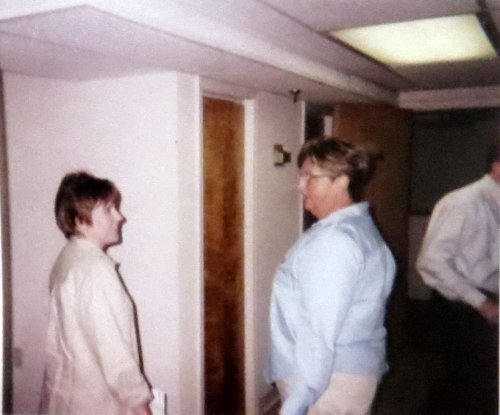
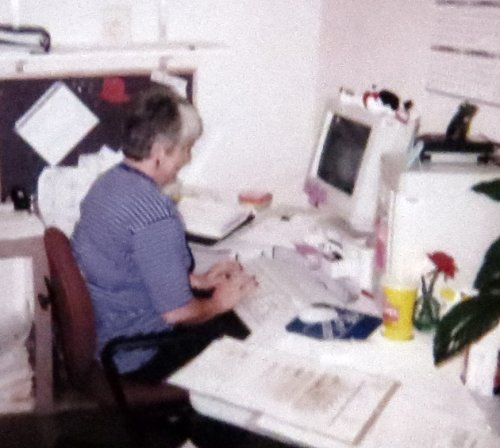
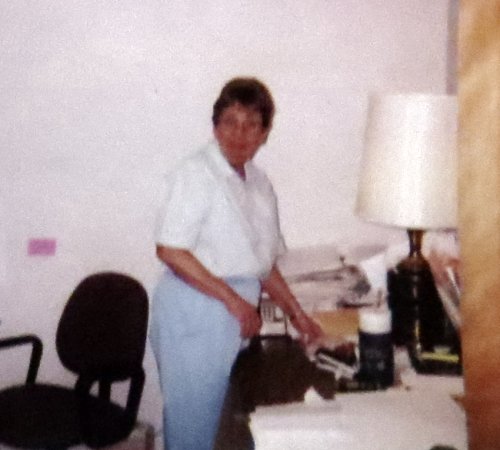
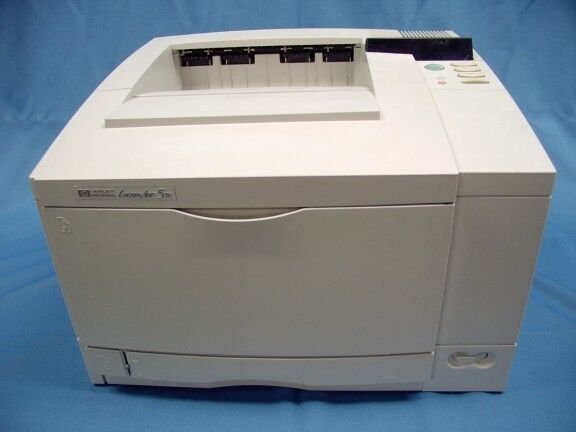



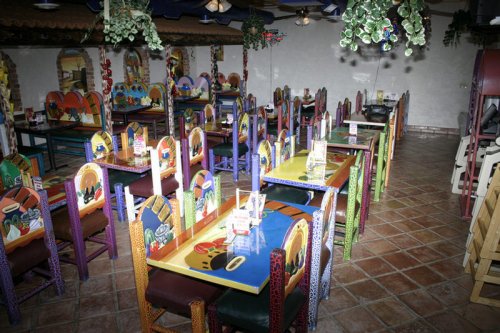


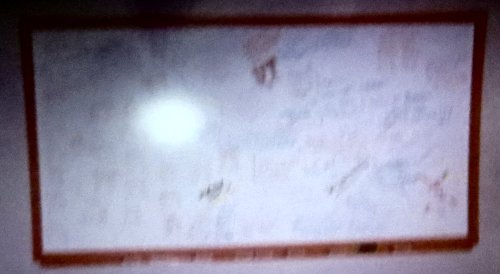
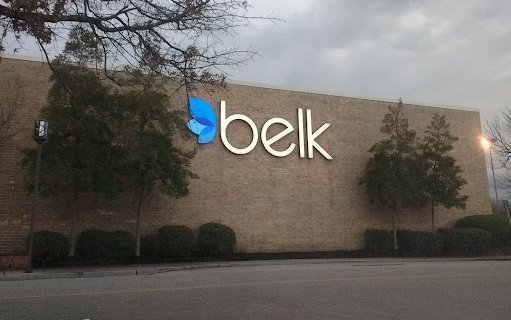
Pingback: 1997-2005 AdDept Client: Proffitt’s Inc./Saks Inc. | Wavablog
Pingback: 1996-1998 TSI: AdDept Client: McRae’s | Wavablog